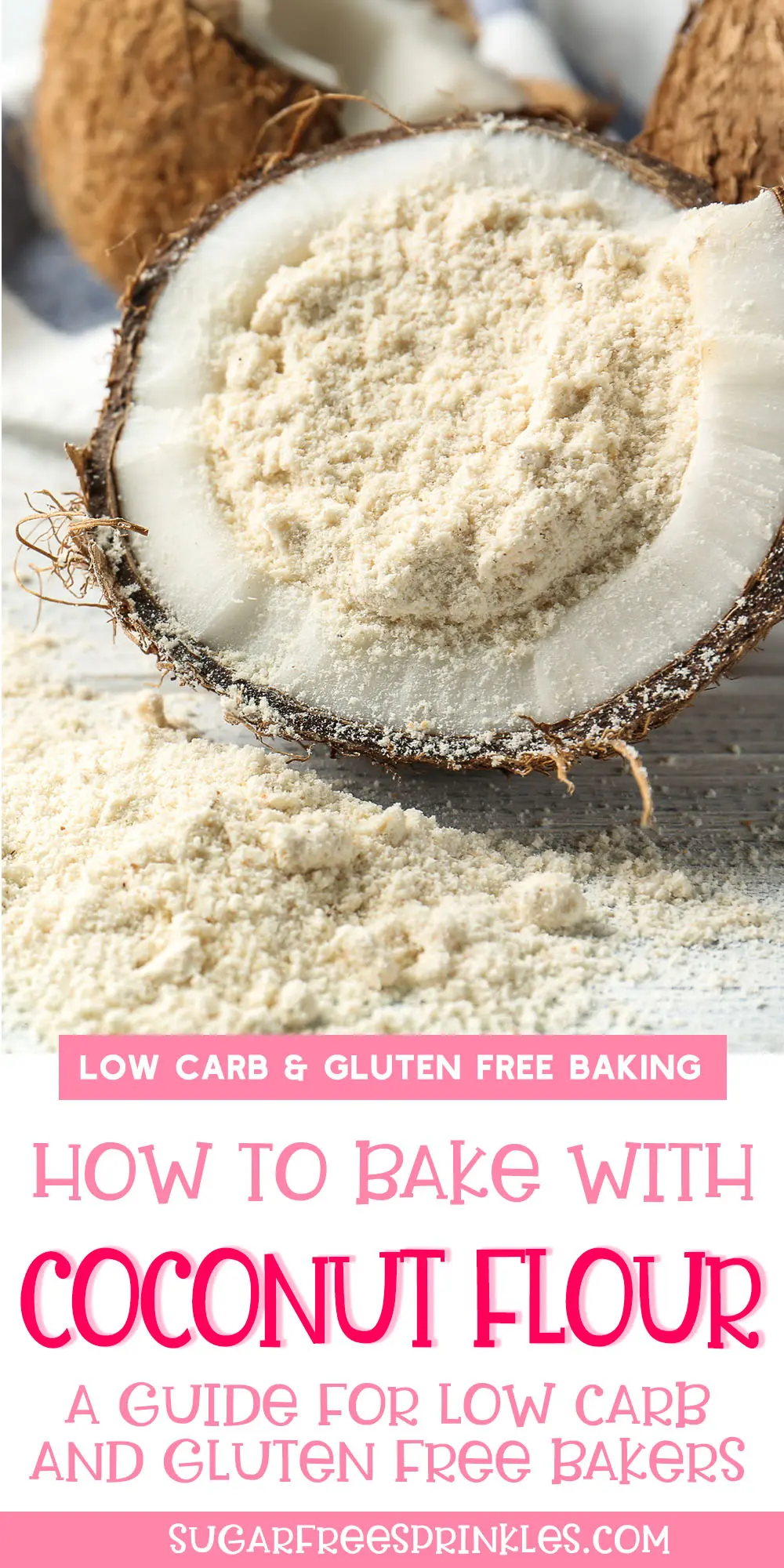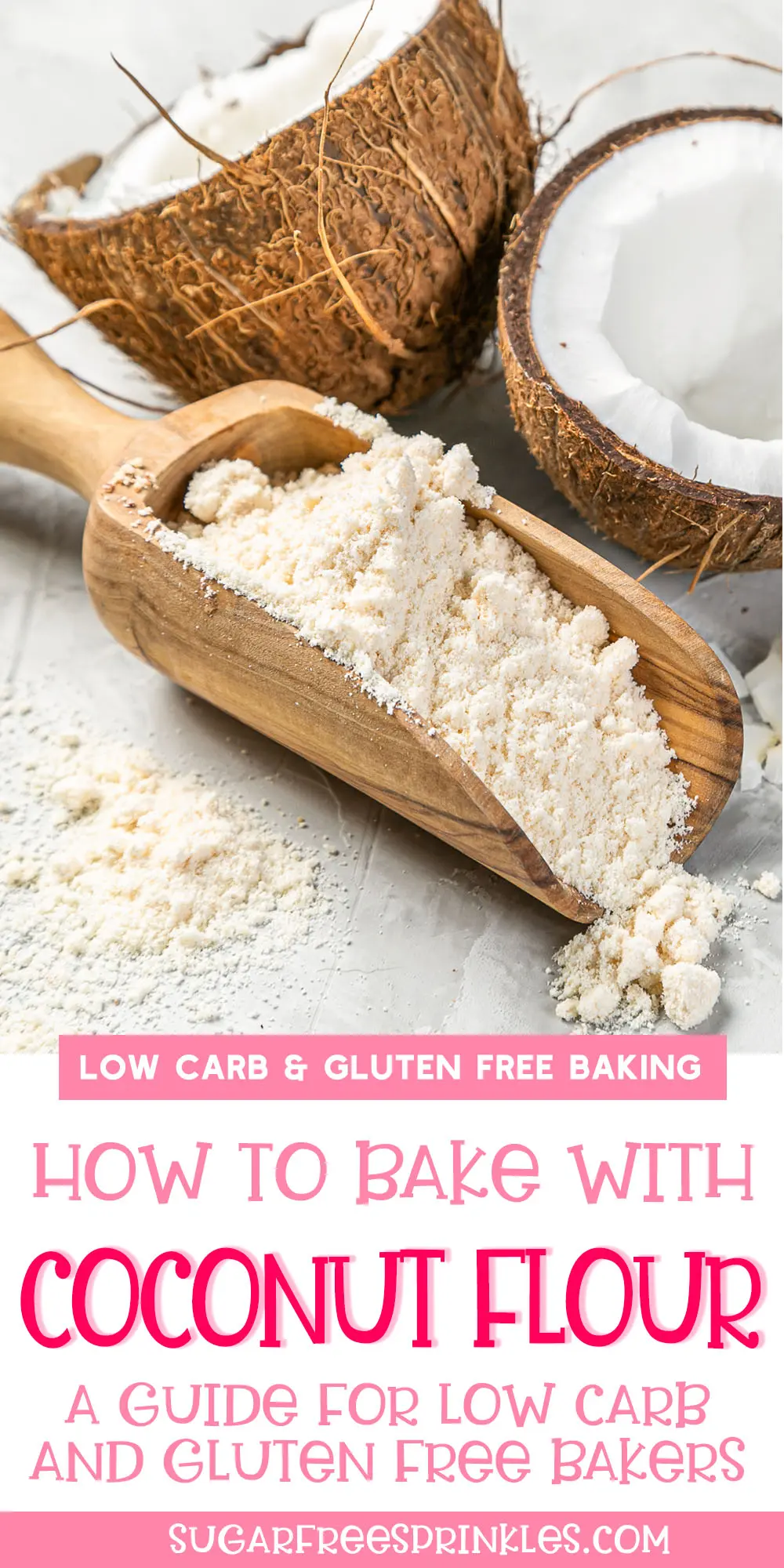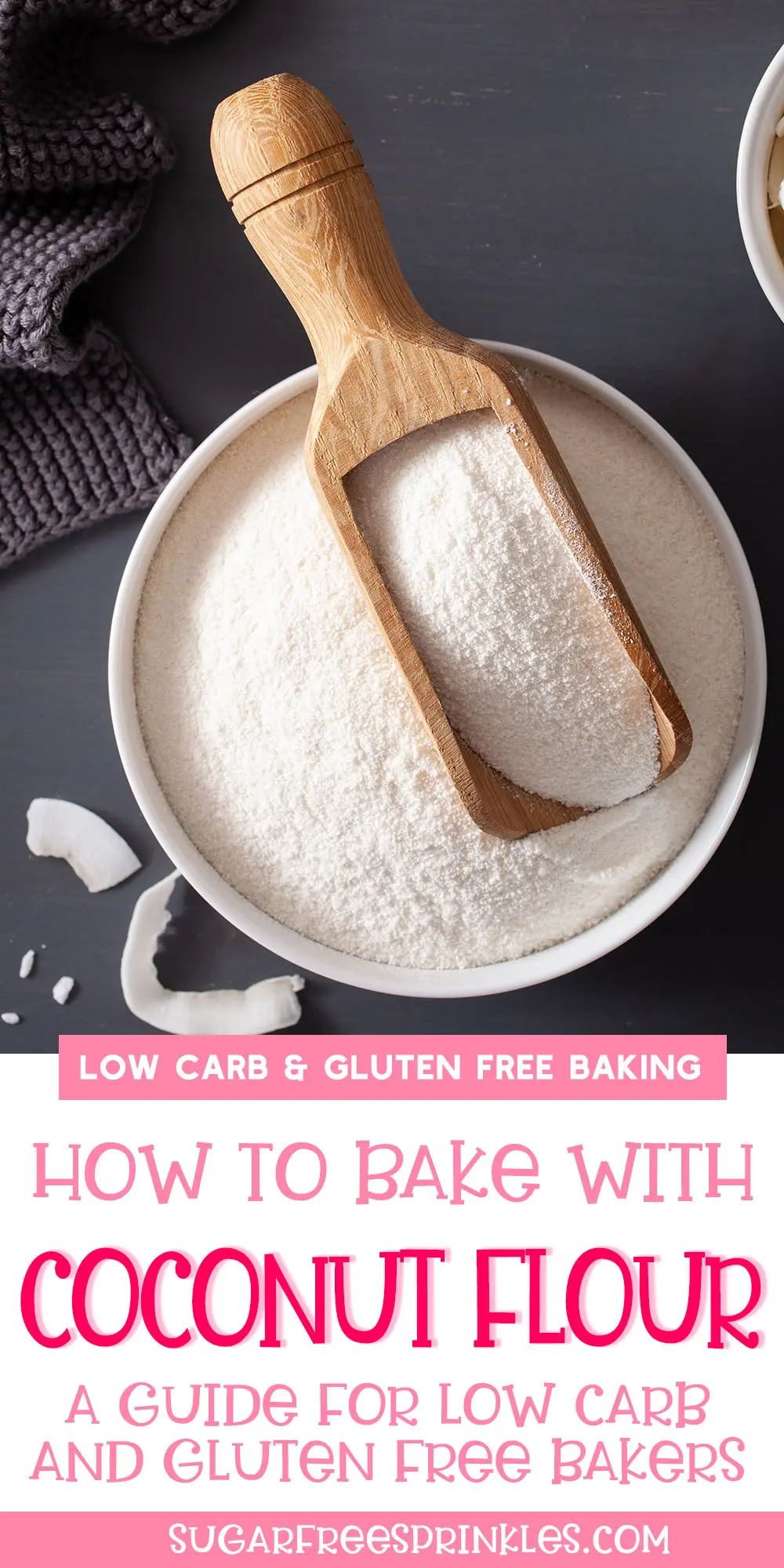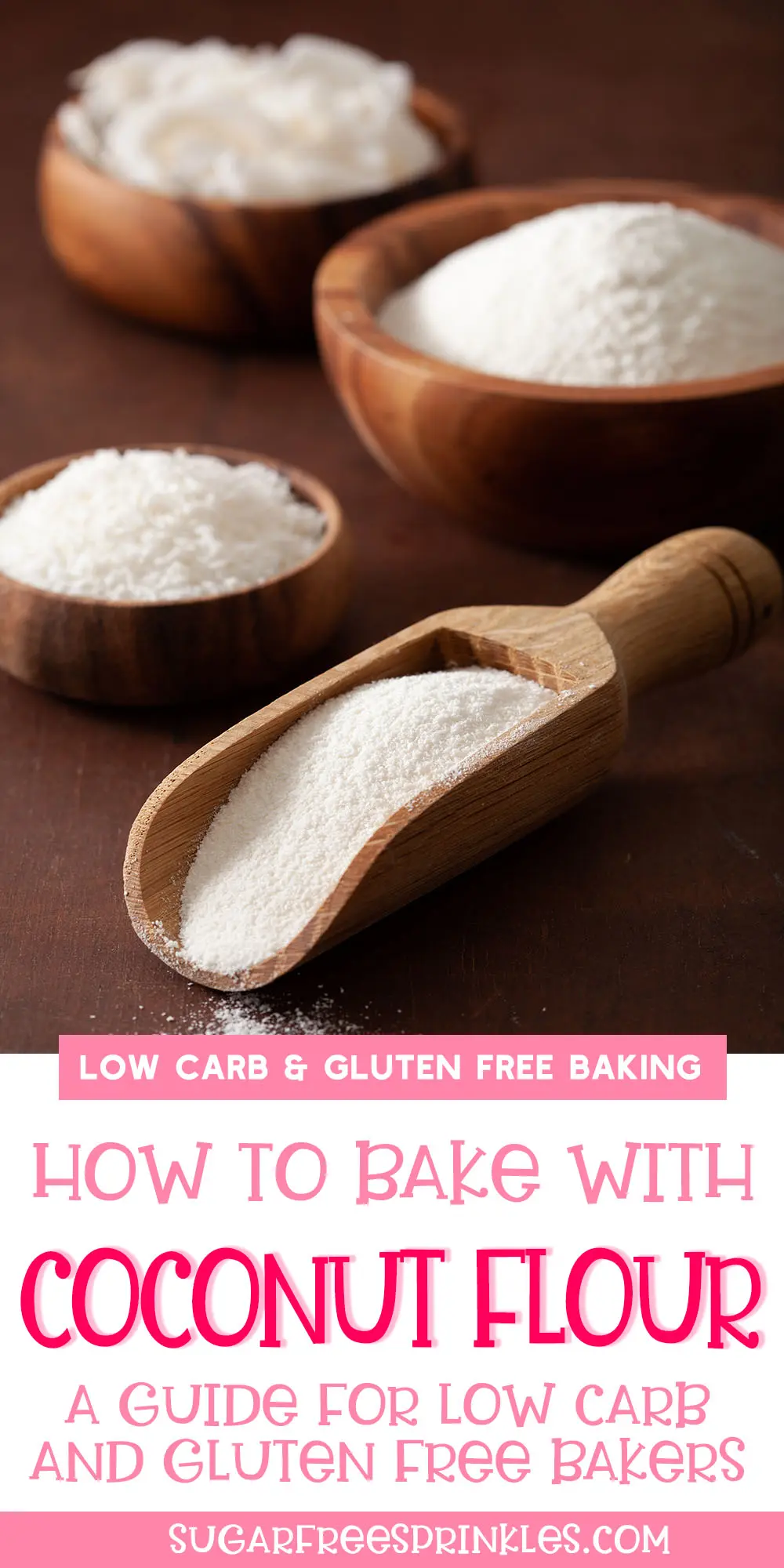Follow some of my best tips and tricks and you’ll master how to bake with coconut flour in no time. I’ll even show you how much to use and all the nutrition and carb counts too!
If you are trying to cut carbs, you have probably run into a few recipes that use coconut flour instead of all-purpose flour. While coconut flour can be an amazing tool in your low-carb journey, it does require some special considerations. In this guide, I’ll answer all your questions about this amazing ingredient.
Related: If you want to learn more about low carb baking, check out or top tips for successful low carb and keto recipes.
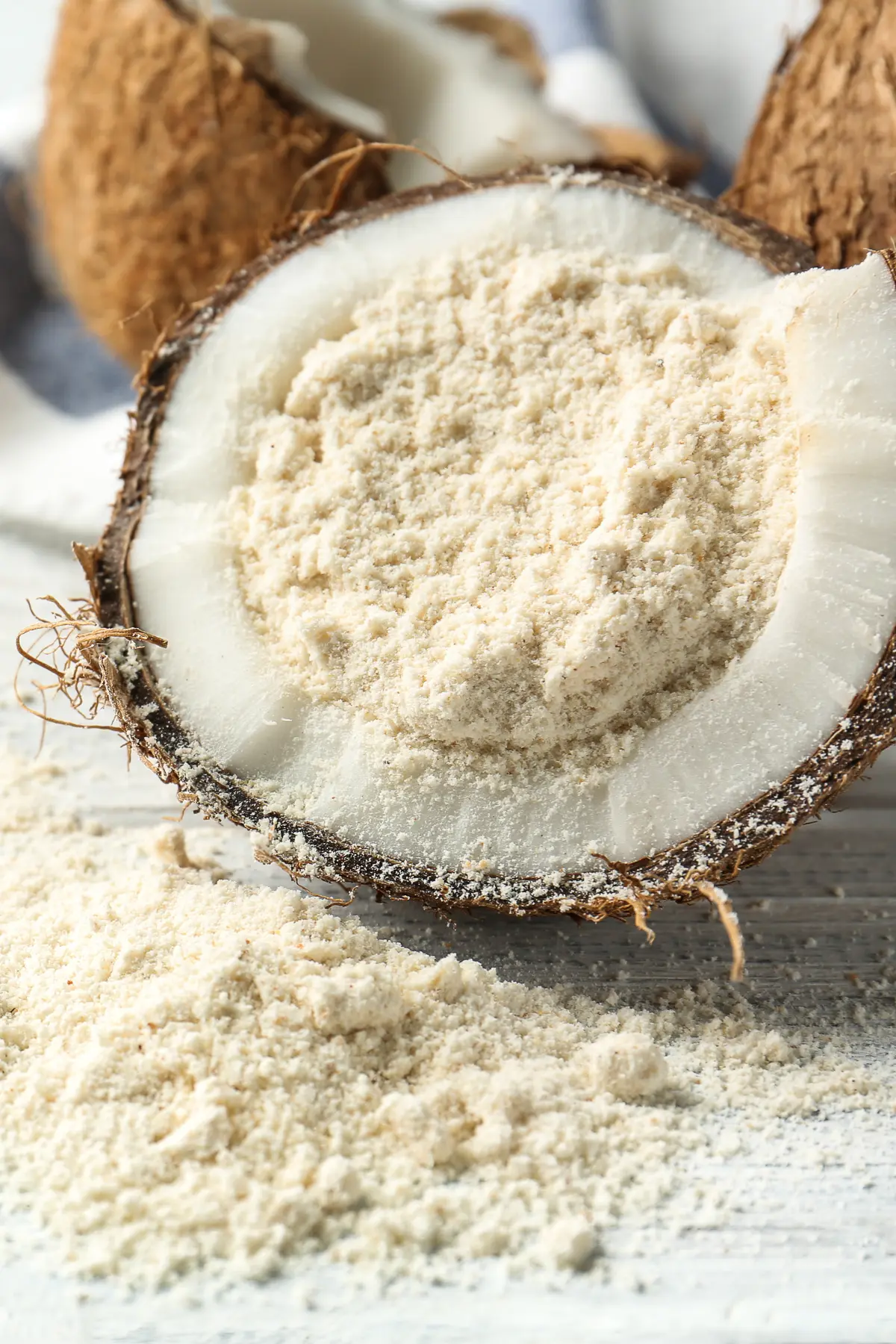
What Is Coconut Flour
Coconut flour is, quite simply, dried coconut meat that has been finely ground up into a flour-like consistency. It’s actually a fantastic product because producers use what is left behind after they press the coconut for its milk. After coconuts are pressed for their milk, bits of coconut meat remains. So, producers take these bits, dry it at a low temperature, and grind it up into a fine powder.
The result is a nutritionally dense flour that is both gluten-free and rich in proteins.
Nutritional Benefits of Coconut Flour
There are so many nutritional benefits when it comes to baking with coconut flour. In fact, it has a lot more nutrients than your traditional all-purpose flour that is made from wheat.
High in Protein
In one ounce of coconut flour, there are 5 grams of protein. These amino acids are vital for brain health and for helping with muscle building. Eating foods high in protein and fiber (like coconut flour) has been shown to reduce hunger and appetite, which is a key part of losing weight.
Good Source of Fiber
Fiber is the unsung hero of weight loss and heart health, and coconut flour is full of it!
In fact, a study in 2006 found that the fiber content in coconut flour effectively lowers cholesterol and reduces the risk of diabetes melitus and cardiovascular disease.
Fiber-rich foods (like coconut flour) have a low glycemic index which means they regulate blood sugar levels.
The fiber is also amazing for your digestion. Most of the fiber in coconut flour is insoluble, which gives bulk to the stools – this reduces constipation. It also has soluble and other fermentable fibers that feed the good bacteria in your gut.
Carb Count Per Cup
Since there is so much fiber in coconut flour, there are only 32 grams of net carbs in every cup of coconut flour.
You might be worried about how high the number of net carbs is in that one cup but chances are, you won’t be eating an entire cup of it.
Most baking recipes call for about 1/4-1/2 cup of coconut flour. There are just 8 grams of net carbs in every 1/4 cup (30-gram) serving.
Full of Healthy Fats – MCTs
One of my favorite things about coconut flour is how it’s packed with healthy fats and MCTs (medium-chain triglycerides). When your body digests MCTs, these healthy fats travel directly to your liver where they are used to produce energy. That means they aren’t stored as fat – so you lose more weight.
MCTs are also known to reduce appetites and help you burn a bit more calories too!
Excellent Source of Minerals
There are lots of other minerals our bodies need that you can find in coconut flour. It has quite a bit of manganese in it, which supports bone health and helps your body use other nutrients like choline and biotin.
If you are anemic, you should definitely up the amount of coconut flour you are consuming. It has iron in it which is excellent for healthy blood cells. Other trace minerals that you’ll find in coconut flour are:
- Potassium
- Phosphorus
- Selenium
- Vitamin B6

Coconut Flour vs. Almond Flour
Besides the obvious, there are quite a few good reasons why baking with coconut flour is a great choice, especially once you get the hang of it.
- It’s a reliable choice for anyone with a nut allergy.
- It also has an unmistakably delicious flavor. It’s almost sweet, without any added sugar or sweeteners.
Plus, that drying effect I spoke about earlier? Well, that gives recipes a better crumb too!
It is one of my favorite go-to options when I am baking pie crusts!
For information on baking with almond flour, check out my full guide here.
How To Bake With Coconut Flour
Lots of people on various eating plans love baking with coconut flour. You’ll find paleo recipes, keto recipes, even gluten-free recipes all using coconut flour as an ingredient.
It’s a very versatile flour that can be used to make all sorts of things from cookies to pancakes, to even homemade low-carb bread!
Even though it’s versatile and used a lot in grain-free baking, it’s still tricky to use. If you want to bake with coconut flour, I have 4 essential tips that will help your recipes turn out exactly how you want them to.
Use More Eggs and Liquids
The first thing you need to know about coconut flour is that it’s super absorbent. Even just a small amount of it will absorb a large amount of liquid. This means that it dries out baked goods more than other types of flours.
The best way to counteract this is to use plenty of eggs when you bake.
Eggs are an excellent source of moisture in baking and they help bind all the ingredients together too. The protein in the egg whites gives the recipe structure while the yolks give it moisture.
If you want your baked goods to be lighter, separate the egg yolks from the whites. Whip the egg whites in a bowl and then fold them into the mixture.
Other liquids you can use to increase the moisture in your recipe include:
- Pureed low carb fruit
- Nut Milk
- Oil
- Vinegar
- Yogurt
Follow Recipes Exactly As They Are
Be very careful with how you measure the coconut flour and all of the other ingredients in your recipe. Since coconut flour is such a drying ingredient, it is important to follow the recipe exactly as it is written.
The general rule in baking is that you can use about 1/4 to 1/3 cup of coconut flour for every 1 cup of regular flour.
If you are a beginner baker or trying to make your own recipe and using coconut flour for the first time, it can be tough to get the balance just right. Start out by following established recipes first.
Believe me, there is a lot of trials and failures when it comes to baking with coconut flour!
Sift the Flour
If you notice that your baked goods have a gritty texture, try sifting your flour before you bake with it. This will break up the flour even more and help it incorporate better into your batter with the other ingredients.
Sifting also adds extra air into the final product, which helps the levening agents (like baking powder and baking soda) rise.
Add Additional Flours
Lots of recipes will call for coconut flour mixed with other low-carb, high-protein flours such as almond flour. This is because it gives recipes better texture and moisture content.
Other flours you can use in your recipes with coconut flour can be:
- Hazelnut flour
- Cassava flour
- Tapioca starch
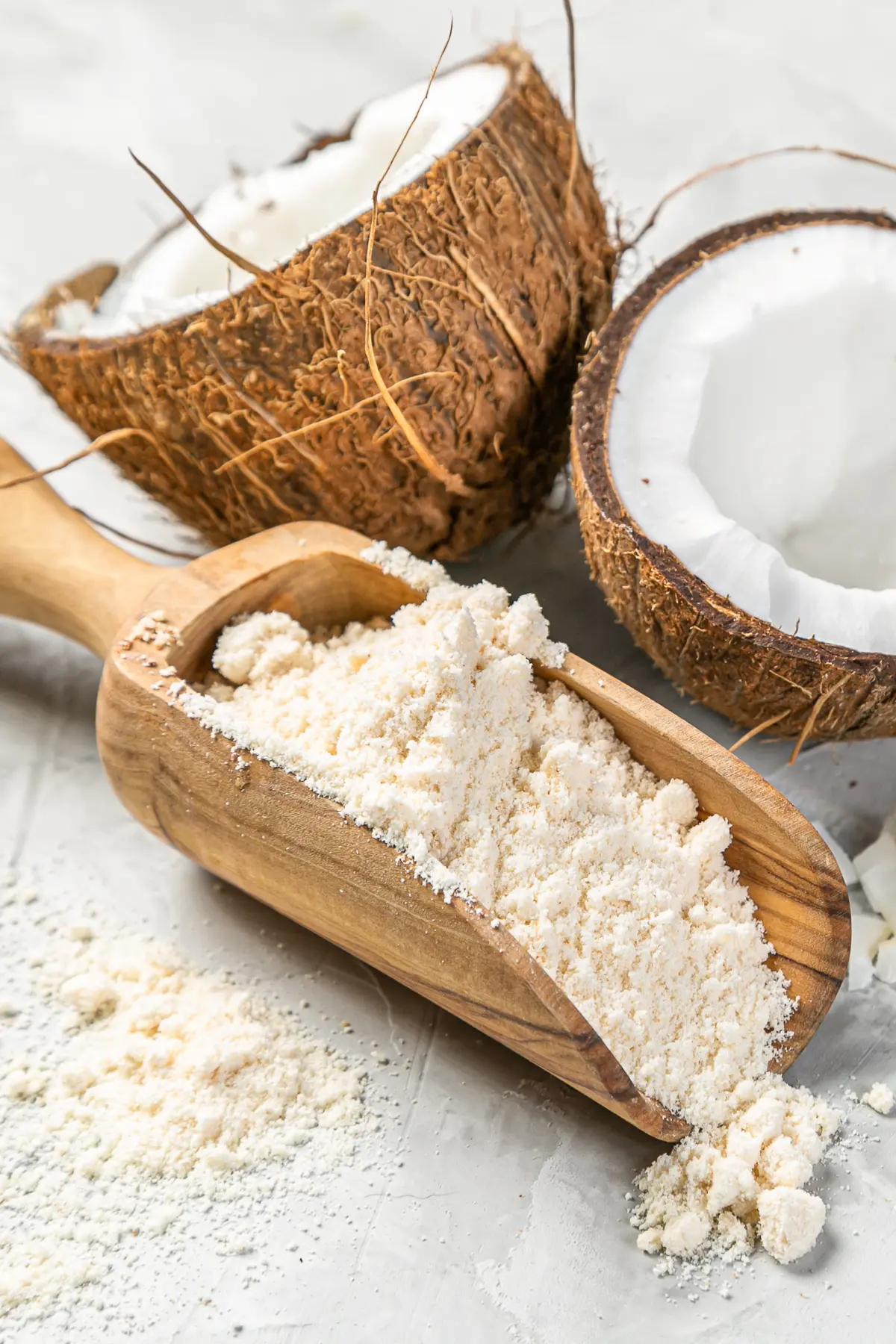
Bake With Coconut Flour: My Favorite Recipes
There you have it. That’s everything you need to know when you want to bake with coconut flour. Ready to try it out and start baking? Here are some of my favorite recipes I make constantly using coconut flour!
- Low Carb Banana Muffins
- Super Silky Keto Chocolate Chiffon Pie
- Lemon Pound Cake With Candy Lemons
- Epic Gluten-Free Raspberry Cheesecake
- Low Carb Peanut Butter Pie With A Chocolate Fudge Crust

